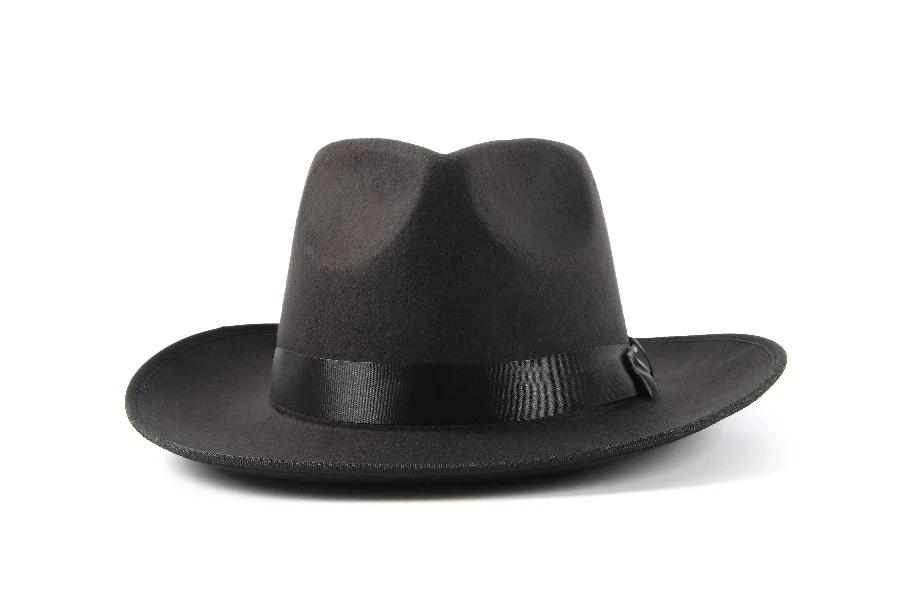Fedora hats, with their rich history and versatile style, have captivated fashion enthusiasts for decades. Originally considered a symbol of sophistication, they have evolved into a staple accessory suitable for both formal and casual attire. This article delves into the world of fedora hats, covering the essential aspects that users care most about: history and evolution, materials and craftsmanship, style and versatility, choosing the right fit, and maintenance tips. By understanding these key elements, you can appreciate the value of fedora hats and make informed decisions about incorporating them into your wardrobe.
Table of Contents:
– History and evolution of fedora hats
– Materials and craftsmanship
– Style and versatility
– Choosing the right fit
– Maintenance tips
History and evolution of fedora hats

Fedora hats first gained popularity in the late 19th century, symbolizing a blend of elegance and practicality. Initially, they were associated with the upper class and were a staple in men’s fashion. However, over the years, fedoras have transcended gender norms and become a beloved accessory for all. Their evolution is a testament to the changing dynamics of fashion, reflecting societal shifts and the fusion of traditional and contemporary styles.
The name “fedora” was inspired by the title of an 1882 play, in which the main character, Princess Fedora Romazov, wore a hat similar in style. This marked the beginning of the hat’s journey into the fashion world. From the roaring twenties to the present day, fedoras have been reinvented time and again, adapting to the trends of each era while maintaining their iconic status.
Understanding the history of fedora hats enriches the appreciation for their design and cultural significance. It’s fascinating to see how an accessory can capture the essence of various epochs, embodying the spirit of innovation and resilience.
Materials and craftsmanship

The allure of fedora hats lies not only in their design but also in the materials used and the craftsmanship involved in their creation. Traditionally, fedoras were made from felt, derived from animal fur, primarily beaver, rabbit, or wool. The choice of material significantly affects the hat’s durability, texture, and suitability for different seasons.
Modern fedoras, however, embrace a wider array of materials, including straw, cotton, and synthetic blends, catering to various preferences and climates. Straw fedoras are ideal for summer, offering breathability and a lighter feel, while wool or felt fedoras are perfect for cooler months, providing warmth and a structured look.
The craftsmanship behind each fedora hat is a testament to the artistry and attention to detail of the milliners. From the shaping of the crown to the curvature of the brim, every step is meticulously executed to ensure the highest quality. The finishing touches, such as the hatband, lining, and stitching, further distinguish each piece, making fedora hats a true work of art.
Style and versatility

One of the most appealing aspects of fedora hats is their style and versatility. They can effortlessly elevate any outfit, from a sharp suit to casual jeans and a t-shirt. The key to styling fedora hats lies in understanding the balance between the hat’s features and the overall ensemble.
Fedora hats come in various brim widths and crown heights, allowing for customization based on personal style and face shape. A wider brim can offer a dramatic flair, while a narrower brim suits a more understated look. Similarly, the color and material of the fedora can complement different seasons and occasions.
Experimenting with how the fedora is worn—tilted forward for a mysterious allure or pushed back for a relaxed vibe—can also alter the hat’s impact on an outfit. The versatility of fedora hats makes them a valuable addition to any wardrobe, capable of transforming a simple look into something remarkable.
Choosing the right fit

Finding the right fit is crucial when selecting a fedora hat. A well-fitting fedora should sit comfortably on the head, neither too tight nor too loose, and should complement the wearer’s face shape. Here are a few guidelines to consider:
- Measure your head circumference to determine your hat size. This ensures a comfortable fit that won’t constrict or slip off.
- Consider the proportion of the fedora to your body type and face shape. A hat with a brim that’s too wide or a crown that’s too high might overwhelm smaller frames or faces.
- Try on different styles to see what feels right and looks balanced. The right fedora should feel like a natural extension of your personal style.
By taking the time to choose the right fit, you can ensure that your fedora hat enhances your appearance and boosts your confidence.
Maintenance tips

To keep your fedora hat in pristine condition, proper care and maintenance are essential. Here are some tips to prolong the life of your hat:
- Store your fedora in a cool, dry place, away from direct sunlight to prevent fading and warping.
- Use a soft-bristled brush to gently remove dust and lint from the surface. For felt fedoras, brushing in the direction of the fabric’s nap maintains its smooth texture.
- If your fedora gets wet, allow it to air dry naturally. Avoid using heat sources, as they can cause shrinkage or misshaping.
Regular maintenance not only keeps your fedora looking great but also extends its longevity, making it a timeless accessory in your collection.
Conclusion
Fedora hats are more than just a fashion statement; they are a symbol of elegance, history, and versatility. By understanding their evolution, materials, styling options, and care requirements, you can fully appreciate their value and find the perfect fedora to complement your personal style. Whether dressing up for a formal event or adding a touch of sophistication to a casual outfit, a fedora hat is a timeless accessory that elevates any look.




